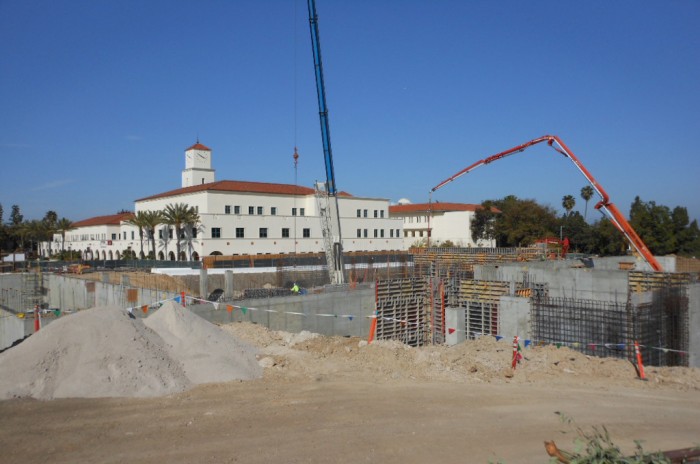
Contemporary design, or traditional? That’s one of the big questions faced by colleges and universities when they’re planning new building projects on campus. Many opt for a historic look that’s only skin deep: the exterior finishes on the new structure mimic the surrounding architecture, but that’s where the similarities end.
Officials at San Diego State University and the project architect, Cannon Design, decided to go one step further in their pursuit of historical accuracy when planning the school’s new 200,000-square-foot Aztec Student Union. In order to give the four-story building a true mission style design, the structure won’t just have gently curving walls and a white-washed finish. It’s also being built without any control or drift joints in the plaster system – just like the nearby historic buildings that inspired its appearance.
That decision, while ensuring a more authentic-looking end product, has created a number of challenges for Sundt, which began the university construction project last June under a $70 million Construction Manager at Risk contract.
“Eliminating the joints increases the risk of cracking on the plaster exterior,” explained Project Manager Jamie Frye. “In order to combat that, we’ve reinforced the building, added fiber-mesh to the plaster mix and extended the cure time for the brown coat. We’ve also added a waterproof membrane beneath the plaster in addition to the standard lath paper to eliminate water from entering the building through cracks in the plaster.”
The team’s modern approach to this historical design challenge also includes getting creative with construction sequencing. Under ordinary circumstances, the roof would be completed before work could begin on interior finishes, but extending the plaster cure time has changed that.
“We can’t afford to wait for the plaster to fully cure before putting the roof on; we’ll simply lose too much time that way,” Jamie continued. “Instead, we decided to put the roof membrane on first and then put a temporary protection roof over it. This way we can give the plaster the time it needs to cure and still get started on the interior – without delaying the project.”
Students, faculty and staff will be enjoying their brand new LEED Platinum building – a thoroughly modern facility with the look and charm of the older structures on campus – when classes begin in the fall of 2013.